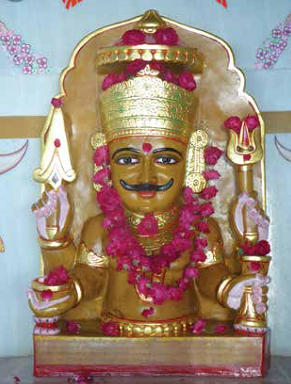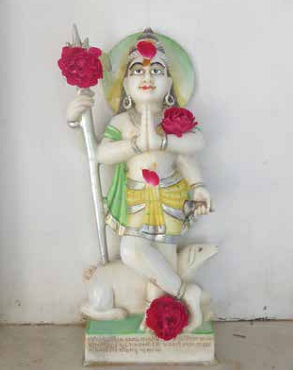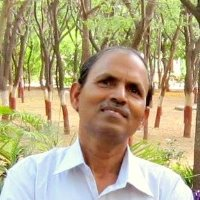
Centre of Jaina Studies Newsletter: SOAS - University of London
The Department of Sanskrit, Jai Narain Vyas University, Jodhpur (India) is engaged in research on Jain philosophical texts and tenets.[1] Having obtained her PhD degree in this field under the supervision of the present writer, Dr Shweta Jain has worked on causality and the pañca-kāraṇa-samavāya doctrine of Jainism. Her work has been jointly published from Pārśvanāth Vidyāpῑṭh, Vārāṇasῑ and Prācya Vidyāpῑṭh, Sājāpura (M.P.) in 2008 under the title: Jaina Darśana Meṃ Kāraṇa-Kārya Vyavasthā: Eka Samanvayātmaka Dṛṣtikoṇa. Jain's is the first critical work which analyses the development of the term pañca-samavāya and its various aspects.
The theory of cause and effect is discussed in every philosophical tradition of India. Jainism considers that cause and effect are identical-cum-different from each other. Jain philosophers have discussed causality in many ways:
- Causality from the point of view of substance (dravya), space (kṣetra) time (kāla), psychical state (bhāva) and birth in a particular species (bhava).
- Causality in regard to the six substances: dharmāstikāya, adharmāstikāya, space (ākāśa), time (kāla), matter (pudgala) and the living being or the soul (jῑva). The term dharmāstikāya designates the indifferent efficient cause of motion of a living being, matter, energy, particle etc., and adharmāstikāya the cause of the resting position of living beings and matter. Space (ākāśa) and time (kāla) are general causes of any effect. Matter (pudgala) causes material effects, and because of these a living being possesses body, mind, language, respiration etc. Souls or living beings (jīva) cause mutual behavior among them and also generate changes in the material world.
- Causality discussed as immediate cause (upādāna) and efficient cause (nimitta).
- Jinabhadragaṇi presents the causality of six cases (nominative, accusative, instrumental, dative, ablative, locative) in the occurring of an effect.

Nākoḍā Bhairujī, Haribhadra Sūri Smṛti Trust Mandira, Chittorgaṛh
Jain philosophers accept that effects of causality can only occur in the permanent-cum-impermanent (nityānityātmaka) existence or in the combination of substance and modes.
The doctrine of pañca-samavāya/pañca-kāraṇasamavāya, compound of five causes, is a very important in respect of the interpretation of causality in Jainism. Here the word samavāya does not give the meaning of inherent relation as used in Vaiśeṣika philosophy. The word samavāya has been used in Sanskrit literature in the meaning of union, collection and combination, e.g. viduṣāṃ samavāyaḥ (a collection of scholars).
This doctrine is the outcome of the non-absolutistic view of Jain philosophers. Time (kāla), nature (svabhāva), determinism (niyati), karma-bondage (pūrvakṛta-karma) and conscious-effort (puruṣa/puruṣārtha) these five causes are the constituents of pañca-samavāya. In Jain canons this doctrine is not found. It was first elaborated by the 5th-century CE Śvetāmbara philosopher Siddhasena Sūri (Divākara), who mentions these five in his Sanmatiprakaraṇa (3.53) as follows:
Kālo sahāva ṇiyaῑ puvvakayaṃ purise kāraṇegantā, micchattaṃ te ceva samāsao u sammattaṃ
"Among time (kāla), nature (svabhāva), determinism (niyati), karma-bondage (pūrvakṛta-karma) and conscious-effort (puruṣārtha) the absolutism of a single cause (ekāntavāda) is considered as a wrong view (mithyātva) whereas a combination of these causes is considered as a right view (samyaktva)."
The Prakrit word samāsao (compound, union or combination) in this stanza seems to be the origination of the Sanskrit Jain philosophical term samavāya, which was later used and is now famous as a designation for the combination of the mentioned causes. Before Siddhasena Sūri, the Śvetāśvataropaniṣad (1.1) already mentions causality as time (kāla), nature (svabhāva), determinism (niyati), by chance (yadṛchā), five elements, place of origin (yoni), consciousness (puruṣa) and accepts that only the combination of these can be the cause of the universe.
If we think about the development of the theory of pañca-samavāya, it can be said that Siddhasena (5th century) is the founder of this doctrine. He mentioned it, not only in his Sanmati-prakaraṇa, but also in his work Dvātriṃśat-Dvātriṃśikā (3.58). Haribhadra Sūri (8th century) proved how a combination of these causes is producing an effect in his works Śāstravārtā-samuccaya (2.79), Bῑjaviṃśikā (9), Upadeśapada (165) and Dharmabindu (2.68). He employed the word samudāya in the Śāstravārtā-samuccaya and the word kalāpa in the Upadeśapada for denoting the combination of all these five causes. In the commentary on the Sūtrakṛtāṅga, Ācārya Śῑlānka (9th-10th century) established the integration in these causes, due to relativity among these. Abhayadevasūri (10th century) rebutted the view of the mutual exclusiveness of kāla-vāda, svabhāvavāda, niyati-vāda, karma-vāda and puruṣa-vāda, and established the relative causality of these five. Ācārya Amṛtacandra (10th century) represented the five causes as five nayas in his discussion of 47 nayas at the end of his commentary on Kundakunda's Pravacanasāra. Rajaśekhara Sūri Malladhārin (12th-13th century) and Upādhāyaya Yaśovijaya Sūri (17th century) indicated the same in their Ṣaḍdarśana-samuccaya (79) and Nayopdeśa (page 92) respectively. In the 17th century, Upādhāyaya Vinaya Vijaya wrote a eulogy in the Gujarati language regarding these five causes. The term pañca-samavāya was used for the first time by Muni Tilokaṛṣi in the 19th century in his poetic work Tiloka-Kāvya-Kalpataru (IV: 105). He explained the combination of these five causes in his poetry as 'pañca-samavāya milyā hota haiṃ kāraja saba' (All works are performed in the collective presence of these five causes). In the 20th century 'Śatāvadhānῑ' Ācārya Ratnacandra demonstrated the relationship of these five causes in a play entitled Kāraṇa-saṃvāda. The doctrine of pañca-samavāya is now accepted in all the sects of Jainism.
In the work of Dr Shweta Jain the five constituents of the doctrine of pañca-samavāya have been elaborately discussed on the basis of the Vedas, Upaniṣads, Mahābhārata, Rāmāyaṇa, Bhagavadgῑtā, the Purāṇas, and the philosophical texts of Nyāya, Vaiśeṣika, Sāṃkhya, Yoga, Bauddha, Mῑmāṃsā, Śaiva traditions with specific stress on Jain philosophical texts: in particular the Jaina canons, their commentaries (including Cūrṇi and Bhāṣya), and texts composed by individual Jain philosophers such as the Sanmati-tarka-prakaraṇa, Dvādaśāranayacakra, Viśeṣāvaśyaka-bhāṣya, Śāstravārtā-samuccaya, Tattva bodha-vidhāyani-tῑka, Prameya-kamala-mārttanḍa, etc. Jain's book, consisting of seven chapters, elucidates in detail accounts of kāla-vāda, svabhāva-vāda, niyati-vāda, karma-vāda and puruṣa-vāda/puruṣārtha-vāda, and of refutations of the absolutistic attitude (ekāntavāda) from the point of view of anekānta-vāda, which establishes multiplex relationship of the five in producing an effect. Practically, the union of five causes (pañca-samavāya) applies to living-beings only, because karma-bondage and conscious-effort are not applicable to causal effects between forms of matter. Jain canons propound three types of modification (pariṇamana): natural (visrasāpariṇamana), e.g. a bud changes into a flower; generated by a living being (prayoga-pariṇamana), e.g. a gold piece is changed into an ornament; and a mixture of both (misra-pariṇamana), e.g. a papaya is ripened through a chemical. This modification is also an effect. Natural effect does not require any human effort and karmabondage. Hence it is proved that natural effect can be produced in a non-living thing by less than five causes. In the case of dharmāstikāya, adharmāstikāya, time, space, and also in some cases of matter, this natural effect is accepted.
Jain's book examines the utility of the doctrine of pañca-samavāya in our practical life in its seventh chapter. For example children's education requires time, reading nature, certain circumstances as determinism, mental and intellectual ability obtained in the result of former karma-bondage and his conscious-effort lacunae of any cause of these may be an obstacle of study/work. In some effects the time factor becomes more important, e.g. a crop requires a certain time to ripe, in some cases nature plays more important role, e.g. the mango seed develops in to a mango tree, not an apple tree. Somewhere determinism becomes primer, e. g. an iron rod is used as building material. In some places conscious-effort becomes key factor, e.g. penance, and in some cases karma-bondage plays prime role. Consisting of 706 pages, including a foreword by D.C. Jain, this work has established that the doctrine of five-cause-compound (pañca-samavāya) is the result of non-absolutistic broad view of Jain philosophers.
Regarding causality and pañca-samavāya no other work is known yet. In his book Jaina Darśana Meṃ Kārya-Kāraṇa-Bhāva Aura Kāraka Vyavasthā, Pt. Banśidhar Vyākarṇācārya discussed causality in general and refuted the ideology of Kānajī Svāmῑ about immediate and efficient cause. Pt. Phūlcand Śāstri composed two books entitled Jain-Tattva-Mῑmāṃsā and Jaipur-Khāniyā-Tattvacarcā and discussed causality in detail, focusing on immediate and efficient cause. In the works of Pt. Sukhlāl Saṅghavī and Pt. Mahendra Kumār Nyāyācārya some discussion about Jain concepts of causality is seen, but we don't find a holistic approach and discussion about pañca-kāraṇa-samavāya. Dr Rājkumāra Chābarā discussed causality of substance in his PhD thesis entitled Jaina Darśana meṃ Dravya kῑ Avadhāraṇā aura Kāraṇa-Kārya Sambandha, but he did not take up discussion of pañca-kāraṇa-samavāya.
In this way no scholar has made a detailed discussion with research point-of-view on pañca-samavāya taking the vast study of Indian literature and especially Jain philosophical texts, into account before Dr Shweta Jain. Hence Jain's is the first critical work which analyses the development of the term pañca-samavāya and its various aspects.
Dharmchand Jain is a professor at the Department of Sanskrit, Jai Narain Vyas University, Jodhpur (India).
References
Primary
Bῑjaviṃśikā-viṃśati-viṃśikā. By Haribhadra Sūri (publisher is not mentioned).
Dharmabindu-prakarṇa. By Haribhadra Sūri, with Vṛtti of Muni-candra-sūri Mumbai: Śrῑ Jinaśāsana Ārādhanā Trust, Vīra Saṃvat 2520.
Dvātriṃśat-dvātriṃśikā. By Siddhasena Sūri, (now available 21 Dvātriṃśikā), with Kiraṇāvali-vivṛtti, Botāda (Sorāṣtra): Vijaya-lāvaṇya-sūrῑśvara Jñāna Mandira.
Jaipur-khāniyā-tattvacarcā. Edited by Pt. Phoolchand Śāstrī. Jaipur: Todarmala Smāraka, 1967.
Jain-tattva-mῑmāṃsā. By Pt. Phūlcand Śāstri. Vārāṇasῑ: Ashoka Prakashana, (1960) 1978.
Kāraṇa-saṃvāda. By 'Śatāvadhānῑ' Ācārya Ratnacandra. Ajmer: Madana Chand Hingad, 1996.
Nayopadeśa. By Yaśovijaya. Mumbaī: Jinaśāsana Ārādhanā Trust, Vikram Saṃvat 2044.
Sanmati-prakaraṇa. By Siddhasena Sūri. Edited by Sukhalāla Saṅghavī. Ahmedabad: Jñānodaya Trust, 1969
Sanmati-tarka-tikā (Tattva-bodha-vidhāyani). By Abhayadeva Sūri. Ahmedabad: Gujarāt Vidyāpῑṭha. Śvetāśvataropaniṣad. Gorakhapura: Gῑta Press, Vikram Saṃvat 2052.
Śāstravārtā-samuccaya (Stabaka 2 & 3). By Haribhadra Sūri, with Syādavāda-kalpa-latā-ṭīkā Composed by Yaśovijaya. Mumbaī: Divya Darśana Trust, Vikram Saṃvat 2039.
Ṣaḍdarśana-samuccaya. By Rajaśekhar Sūri Malladhārin. Āhora (Māṛavāḍa): Bhupendra Sūri Jain Sāhitya Samiti. Tiloka-kāvya-kalpataru. Ahamadanagar: Ratna Jaina Pustakālaya.
Upadeśapada (Vol. 1). By Haribhadra Sūri. Mumbaī: Śrῑ Jinaśāsana Ārādhanā Trust, Vikram Saṃvat 2046.
Other literature
Banśidhar Vyākaraṇācārya. Jaina Darśana meṃ Kārya-Kāraṇa-Bhāva sura Kāraka Vyavasthā. Delhi: Digambara Jain Saṃskrti Sevaka Samāja, 1973 (Baraiyā Granthamālā).
Chābarā Rājkumāra. Jaina Darśana meṃ Dravya kῑ Avadhāraṇā aura Kāraṇa-Kārya Sambandha. Unpublished Ph.D Thesis, Sanskrit Department, Jai Narian Vyas University, Jodhpur (Rajasthan), 1992.
Hemprabhā, Sādhvῑ. Jaina Stotrakāvya Kā Samῑkṣātmaka Adhyayana. Beawer (Rajasthan): Muni Śrῑ Hajārimala Smṛti Prakāśana Samiti, 2001,
Jain, Shweta. Jaina Darśana meṃ Kāraṇa-Kārya Vyavasthā: Eka Samanvayātmaka Dṛṣtikoṇa. Vārāṇasῑ and Sājāpura (M.P.): Pārśvanāth Vidyāpῑṭhand Prācya Vidyāpῑṭh, 2008.
Jain, Hemlata. Lokaprakāśa kā Samῑkṣātmaka Adhyayana. Ahmedabad: L.D. Institute of Indology, 2014.
Jain, Pavan Kumar. Jinbhadragaṇi kṣamāśramaṇa viracita Viśeṣāvaśyaka-bhāṣya kā Malladhārin Hemcandra Sūri racita Bṛhadvṛtti ke Āloka meṃ Jñānamῑmāṃsῑya Adhyayana. Unpublished Ph.D Thesis, Sanskrit Department, Jai Narain Vyas University, Jodhpur (Rajasthan), 2014.

Gorā Bhairava, Haribhadra Sūri Smṛti Trust Mandira, Chittorgaṛh
Due to restrictions of space, here a brief appraisal of Dr Shweta Jain's work about causality and pañca-samavāyacan alone can be presented. Sādhvῑ Dr Hemprabhā, Hemlata Jain, and Pavan Kumar Jain are students who have also recently have obtained their PhD degree in this field under the supervision of the present writer. Sādhvῑ Dr Hemprabhā has produced a critical study of Jain praise-poetry (stotra-kāvya) which was published in August 2001 by the Muni Śrῑ Hajārimala Smṛti Prakāśana Samiti, Beawer (Rajasthan), under the title: Jaina Stotrakāvya Kā Samῑkṣātmaka Adhyayana. Dr Hemlata Jain has worked on the Lokaprakāśa, composed by Upādhyāya Vinaya Vijaya in the 17th-18th century. Her research work was published in 2014 by the L.D. Institute of Indology, Ahmedabad, under the title: Lokaprakāśa Kā Samῑkṣātmaka Adhyayana. Dr Pawan Kumar Jain's yet unpublished PhD thesis is an epistemological study of Jinabhadragaṇi's (7th century) Viśeṣāvaśyakabhāṣya in the light of Hemcandra Maladhārin's (11th-12th century) Bṛhadvṛtti.
 Prof. Dharmchand Jain
Prof. Dharmchand Jain